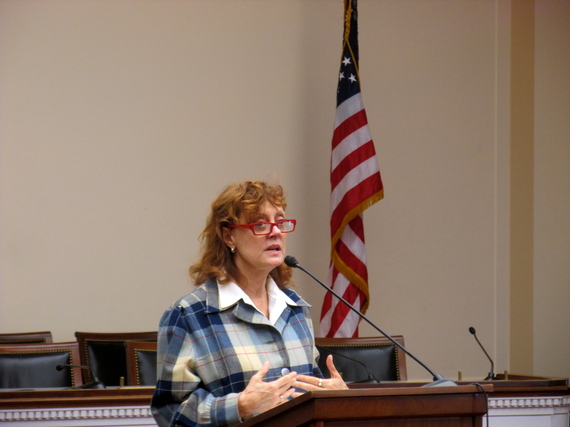
Briefing Seeks Inclusion for Homeless In Hate Crime Data Collection
The National Coalition for the Homeless (NCH) released disturbing new data this week on the extent of hate motivated violence directed against homeless Americans. The data were released during a wide-ranging congressional briefing hosted by the House of Representatives Homelessness Caucus and Rep. John Conyers, Jr.(D. MI-13). Unofficial NCH data were highlighted because the homeless, while among those most victimized by hate crime violence, are excluded from federal hate crime protections and data collection statutes, as well as by laws in most states. Some jurisdictions have gone in the opposite direction, criminalizing routine living activities of the homeless and those who try to aid or feed them.
House Bill H.R. 1136, introduced in March 2013, would amend the recently expanded Hate Crime Statistics Act, to also include homeless status in federal hate crime data collection. Eddie Bernice Johnson, who introduced the data collection bill stated, "As a nation, we must do more to protect the homeless population and to foster an environment where the most disadvantaged amongst us can break the cycle of homelessness." Over the past 15 years NCH documented over 1,400 acts of "hate" violence against America's homeless residents out of apparent bias by domiciled individuals. On any given evening, over 610,000 Americans are without shelter.
New Report Documents Torture and Killings of Homeless Americans
This exposed condition leaves these residents, who are often families or individuals experiencing health problems, vulnerable to a vast array of brutal attacks, often by ambush. Over recent years the NCH data collection efforts have documented beatings, stabbings, blunt force trauma, setting victims on fire, drownings, shootings, sexual assault, maiming, stoning and spray painting. In 2013 85 percent of known perpetrators were under the age 30, with 48 percent under age 20. In contrast, those over the age of 40 represented 72 percent of victims, with 37 percent being over 50.
Bias-motivated homicides against the homeless remained stable, near decade lows, at 18 nationally for the second year in a row in 2013. Still, over the past 15 years hate homicides against the homeless have outpaced all other hate crime homicides combined by a greater than two to one ratio. National data over the most recent five-year period of 2008-12, where comparative figures are available, showed anti-homeless hate homicides at 139, compared to only 36 for all other hate crime homicides combined as tabulated by the Federal Bureau of Investigation.
Many, but not all, of these cases appear to be "thrill" hate crimes. In these unprovoked attacks packs of young males seeking little else than excitement and peer validation hunt down vulnerable homeless residents. This trend was popularized last decade in a disturbing retail video called "Bumfights" which featured attacks and harassment of homeless people, including military veterans. Last September two 13-year-olds and one 14-year-old boy playing "knockout" killed a 46-year-old homeless man in Hoboken, New Jersey, following a fall after pummeling him in the face. Lone offenders also pose a risk to vulnerable, often elderly homeless people. In Honolulu, Hawaii, on December 4, 2013, an 83-year-old homeless man died of head injuries after being beaten by a teenager. George Mohr, a 71-year-old homeless veteran from Doylestown, Pennsylvania, who was stabbed over 70 times on July 3, 2013, died days later at Temple University Hospital after suffering multiple fractures, punctures and brain injury.
The NCH representative sample of nonlethal attacks, considered a vast undercount, rose 30 percent last year, although it is unclear how much of that rise is attributable to enhanced reporting. More informative than the numbers was the brutal diversity of these 2013 attacks which included assaults with handguns, a metal chair, gasoline, knives, rocks, bottles, pepper spray, as well as paintball and airsoft guns. Homeless Americans are not only among the most victimized by violence in our society, but also among those least likely to report crimes. In contrast violent crime overall in the United States declined about 10 percent in the five years since 2008. California and Florida with warm weather and large populations again led the nation in hate attacks against the homeless last year.
Actress Susan Sarandon, a longtime advocate for the homeless, stated at the briefing, "Even though I worked with the homeless I wasn't aware of the level of violence." Florida Representative Alcee Hastings said, "It's a crying shame in this nation that we turn a deaf ear and a blind eye," while urging constituents to contact their congressperson to support the pending bill.
Perhaps the most riveting commentary came from a former homeless man, David Pirtle, who was pelted with rocks in both New York and Washington, D.C., not far from the White House. He further stated, "I was sprayed painted. There were spray painters tagging a building, then they decided to tag me.... Nobody deserves to be treated like this."
Photo: National Coalition for the Homeless

